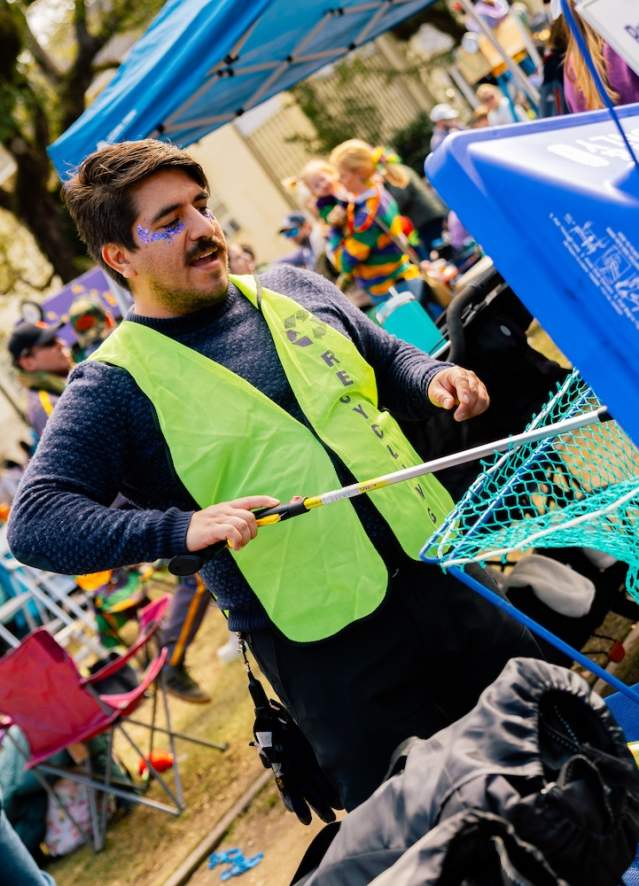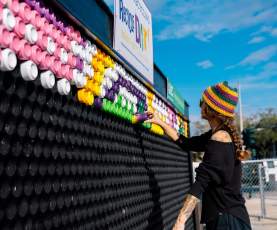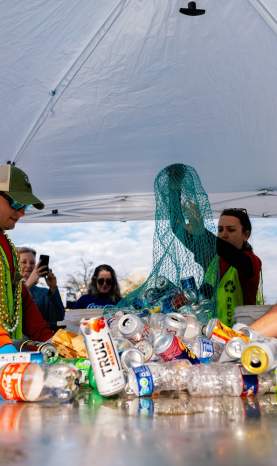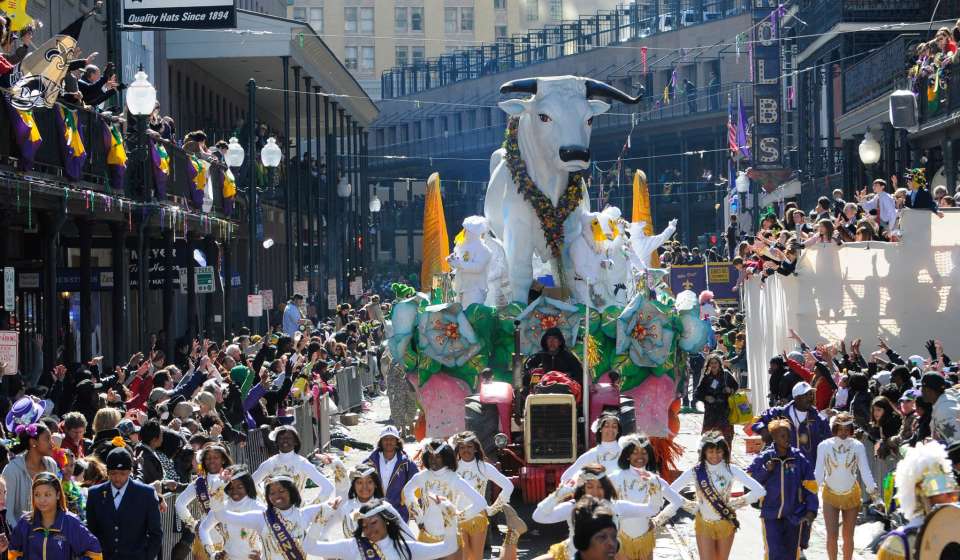Sustainability at Mardi Gras
Eco-Friendly Mardi Gras: Green Parades & Sustainable Fun
Each year, hundreds of thousands descend on New Orleans to celebrate Mardi Gras. It’s a great time for everyone; from eating along the parade route to family-friendly celebrations, Carnival welcomes all. In its grand revelry comes a grand amount of waste, with thousands of tons of garbage collected by the city each year. In recent years, there has been a transition to sustainable practices, with everyone from individual riders to entire krewes taking on the challenge of changing the narrative. Read on below for green krewe initiatives and Carnival waste reduction practices you’d be surprised to find out just how sustainable Mardi Gras can be.
Mardi Gras Bead Recycling
Plastic beads are a dime a dozen in Carnival season, and we get it – it’s fun to catch some beads and wear them around in the spirit of it all. But what do you do once you have a bag full of beads and it’s weighing you down? Bead recycling receptacles can be found in the lobby of many hotels during Mardi Gras season. You can find ArcGNO donation bins at several locations around the city year-round. For over 30 years, ArcGNO has created wage-earning jobs for individuals with intellectual disabilities by recycling Mardi Gras throws. By recycling your throws, you’re not only saving the planet, but creating jobs when doing so.
RECYCLE DAT!
RECYCLE DAT! is a parade recycling project working to reduce the amount of trash sent to landfills during Carnival Season. For three years now, The New Orleans Office of Resilience & Sustainability (ORS), in partnership with New Orleans & Company, Grounds Krewe, Glass Half Full, and Osprey Initiative, have worked to create a greener Mardi Gras through recycling initiatives.
Thanks to sponsors like Every Can Counts, Entergy New Orleans, Coca-Cola, Louisiana Beverage Association, Premium Parking, and other partners, the Recycle Dat! initiative successfully diverted 73,858 total pounds away from landfills during the 2025 Carnival Season. This total includes 3,828 pounds of aluminum, which is roughly 100,000 cans; 905 pounds of plastic bottles, which is roughly 23,490 bottles; 46,321 pounds of glass; and 22,803 pounds of Mardi Gras beads and throws.
On-Route Parade Recycling Program:
The Recycle Dat! initiative continued its on-route recycling program during weekend day parades, allowing the public to recycle aluminum cans, glass, plastic bottles, and unwanted parade throws. Staffed recycling stations along Napoleon and St. Charles Avenues serviced receptacles placed along the route and distributed "crawfish sacks" for collecting clean throws to be recycled and reused. During the 2025 Mardi Gras season, this initiative diverted 15,457 pounds from landfills in the form of:
3,380 pounds of glass
7,641 pounds of beads and throws
3,536 pounds of aluminum
900 pounds of plastic bottles
Mardi Bar Wars: From February 1st through Mardi Gras Day, 23 New Orleans bars participated in a competition to recycle the most glass in partnership with Glass Half Full, Climate Culture, Pursuit of Happiness Farms, and Creole Contemporary. This initiative diverted 41,431 pounds of glass from landfills, converting it into sustainable sand for coastal restoration projects.
Off-Route Recycling Collection:
The New Orleans Ernest N. Morial Convention Center continued to recycle Mardi Gras beads at the parade parties for Bacchus and Orpheus, partnering with Osprey Initiative to divert 5,000 pounds of beads and throws and 1,500 pounds of glass from landfills.
The French Quarter Management District teamed up again with Glass Half Full to provide bead and throw recycling at hotels in the French Quarter. Together they diverted 9,894 pounds of throws and beads from landfills.
On February 14, 2025, the "Re-Cyclists" marching krewe paraded with Krewe of Bohème to collect 162 pounds of aluminum, 10 pounds of glass, and 6 pounds of plastic bottles from parade attendees in a fun and interactive way.
For more information on Mardi Gras sustainability, including year-round drop-off sites and krewes that are championing sustainable throws, visit https://recycledat.org.
Sustainable krewes and throws
Some Mardi Gras krewes have taken it upon themselves to ban plastic beads entirely and commit to sustainable throws. The leader among all plastic-free parades is the Krewe of Freret, which typically parades two Saturdays before Mardi Gras Day. Glass beads replace plastic beads alongside useful throws like red beans, popcorn, jambalaya ingredients, socks, bamboo toothbrushes, and bars of soap. A krewe leading in biodegradable throws is the all-woman Krewe of Iris. Known for their signature throw, sunglasses, the krewe has adopted “plant me” beads which are created in a lab.
Others have begun to cut back on the amount of plastic. The Krewe of Muses continued their tradition of pairing traditional throws with useful, reusable objects, including a knit beanie, a portable (and wearable!) fan, and chip clips modeled after their famous duck float. And the King of Carnival himself (and the entire Krewe of Rex) has also been focusing more on sustainable throws, from biodegradable glitter kits, DIY mini herb and wildflower garden starter kits, and lemon-scented hand scrub, perfect for ridding your hands of crawfish spice after a boil. And then there’s one classic throw that’s not going anywhere: the MoonPie – a Mardi Gras tradition that started in the 1950s.
Broader impact
Most New Orleanians can agree that New Orleans parade waste reduction is a goal each and every Carnival season. The evolution of eco-friendly alternatives to Mardi Gras throws is welcome, especially when it comes with fashionable and durable glass beads and a wide range of useful products, from food to accessories and even dental floss. When a krewe commits to being sustainable, visitors and residents reap the benefits, and our city lives another day to throw the greatest free party in the world.




